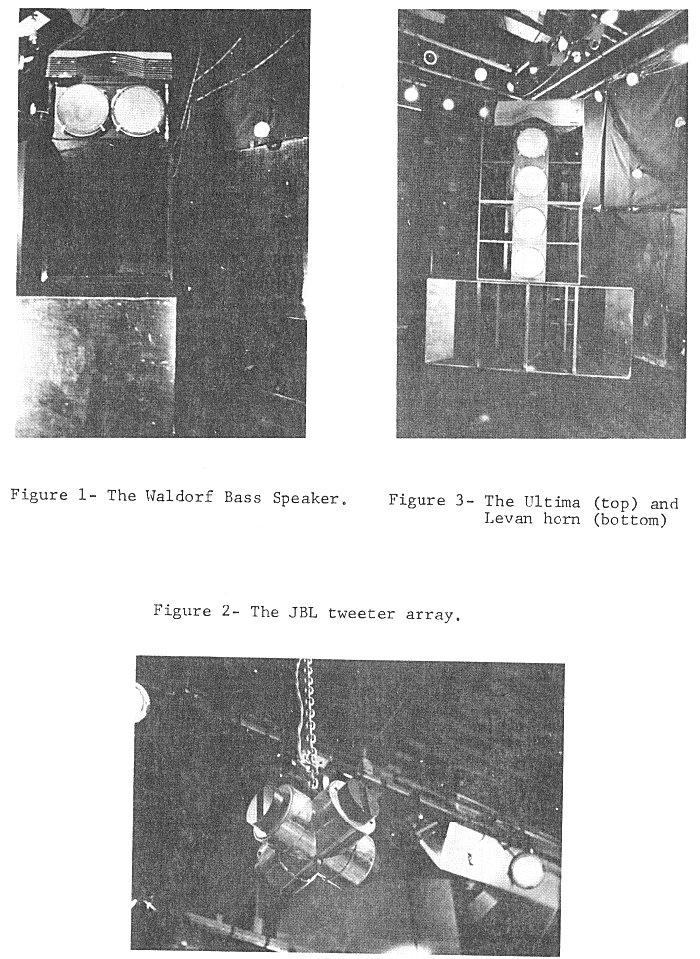Horn speaker
From Free net encyclopedia
Image:Horn speaker.GIF A horn speaker is a speaker that uses a "horn" to get more sound (volume) from the driving loudspeaker. The horn itself does not amplify anything, but rather improves the coupling between the speaker driver (typically made of paper or, more recently, more exotic materials such as titanium) and the air (which has a very low density). Simply put, air is very light and speaker cones are relatively very heavy, so horns "trick" the speaker cone into believing it is very large in surface area, and very light (more like air).
Contents |
How it works
In this sense some people have described a horn as an "acoustic transformer". Stated another way, it converts large pressure variations in a small amount of air into a low pressure variation (the human ear is very sensitive indeed to pressure variations - even quite loud sounds are actually very small pressure variations!) in a large amount of air.
The most well known early horn speakers are those on mechanical phonographs, where the record moves a heavy metal needle that excites vibrations in a small metal diaphragm that acts as the driver for a horn. The horn improves the loading and thus gets a better "coupling" of energy from the diaphragm into the air, and the pressure variations then get smaller as the volume expands and the sound travels up the horn.
A modern electric horn speaker works the same way, replacing the mechanically excited diaphragm with a dynamic or piezo speaker.
Advancements on the basic principle
As usual, once a principle of operation has been defined, the technology can be adapted and improved almost without limit.
The horn should not just be a cone shape of fixed length, since this would resonate at the natural frequency of its length. Modern horn designs typically feature some form of exponential flare, such as the tractrix taper. Roughly speaking, the slower the flare rate, the deeper and lower frequencies the horn will reproduce. For example, a horn area growth rate of 30 percent per foot will allow reproduction down to about 30 Hz; 1000 percent per foot (10 times area) per foot provides midrange reproduction; 100 times area per foot is used in high frequency horns.
Applications
Horn speakers are used in many audio applications, since the usage of a horn reduces the need for the speaker cone to be as lightweight as possible. The drivers in horn speakers can be very small, even for bass frequencies where conventional speakers would need to be very large. Horn speakers can be designed to reproduce a wide range of frequencies using a single, small driver, avoiding the need for a crossover entirely.
Horn speakers can provide very high efficiencies, making them a good match for very low-powered amplifiers, such as single-ended triode amplifiers or other high quality tube amplifiers. Some audiophiles use horn speakers for audio reproduction, while others eschew horn systems for their harmonic resonances (finding them an unpleasant form of distortion).
Horn speakers can also be used to provide very high sound pressure levels needed for sound reinforcement and public address applications, although in these high sound pressure applications, high fidelity may sometimes be compromised for the sake of efficiency. Concert venues often use large arrays of horn speakers for high-volume bass reproduction ("bass bins"), in order to provide bass that concertgoers can not only hear but also feel.
Well Known
A few of the best & most used vintage Sound Reinforcement horns & new ones arround the world are:
Peavey MB-1
- Peavey MB-3 in the HDH-4 High Level MidBass High Frequency Manifold System in .PDF available at www.peavey.com
- Peavey FH 1 Compact High-Level Folded-Horn Low Frequency in .PDF
- Peavey FH-2 High Efficiency High-Level Folded-Horn Low Frequency in .PDF
- Peavey DTH 118 Low-Frequency Fold-Horn in .PDF
- Peavey DTH 118b Low-Frequency Folded-Horn in .PDF
CerwinVega Earthquake T-36, AB-36, SL-36, etc.. http://www.cerwinvega.com
- JBL 4550 2x15 18mm ply & JBL 4560 1x15 in .PDF Vintage JBL1
- JBL Scoops 4520 4530 in .PDF Vintage JBL2
Electrovoice W-Bins
Fane
Levan-Horn,
http://www.acoustilog.com/disco1.html
Levan Horn called like that by the DJ of Paradise Garage Larry Levan:

EAW BH882i ftp://ftp.eaw.com/Loudspeaker_product_info/Discontinued_loudspeakers/BH_Series/BH882iP.pdf now reemplaced by EAW DCS2, EAW LA400, BH822e or BH760 http://www.eaw.com/
JBL VS2210 Venue, New JBL HLA
the old http://www.adamsonproaudio.com
http://www.ramsdellproaudio.com/products/subs/WH1-DBL.htm
- [1] Pyleaudio.com Pro PPM501
Electro voice MT4
many many more... for more info:
See also
External links
- Horn design information
- [2] The old Easy Most Complete Best Web Page for Horn Design DUY
- [3] The Easy Most Complete Best Web Page for Horn Design DUYde:Horn-Lautsprecher